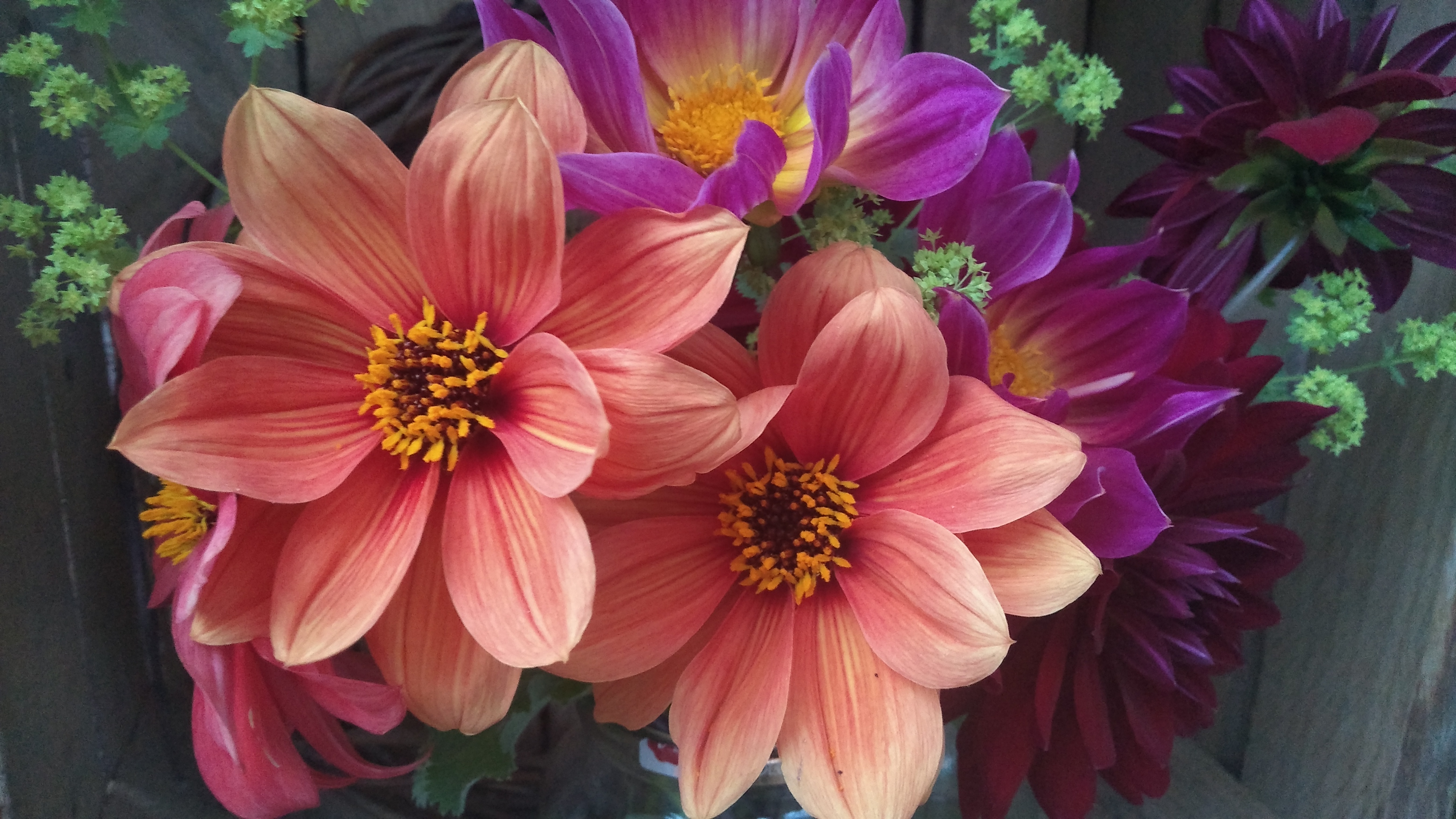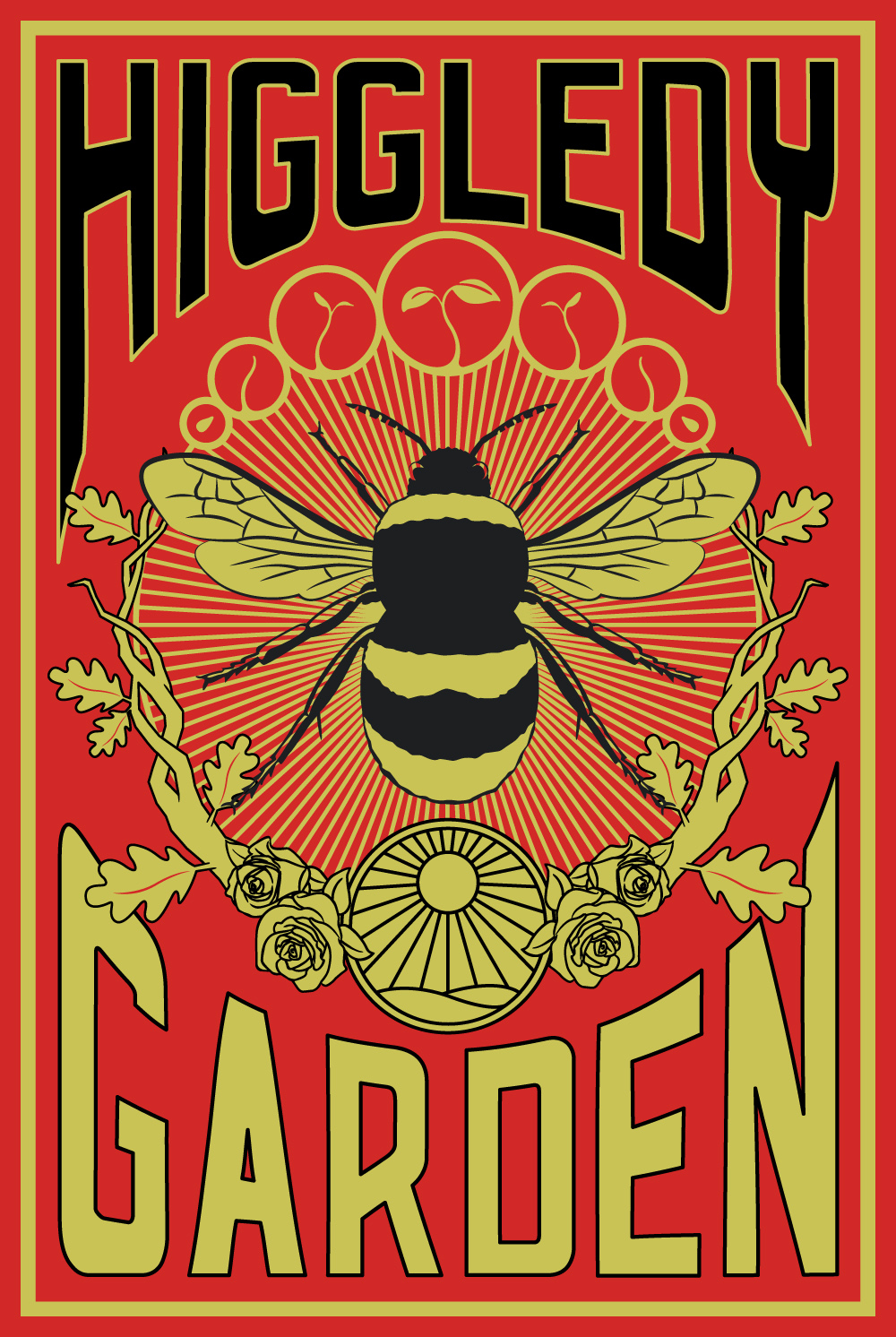Growing perennials from seed for your flower patch

Many cut flower gardens are based around annual flowers, these are plants that you sow, usually in spring, they get planted out, they flower through the summer, cutting them makes them produce more flowers but eventually they set seed and die. Sounds quite brutal when you put it like that. But they are highly productive, cheap and relatively easy to grow. However, they can be quite labour intensive, need keeping well fed and watered and can be prone to certain ‘pests’ like slugs which can decimate a crop before you even get started. They can also be more sensitive to the vagaries of the weather and their ‘season’ for cutting is usually May to September, but they are great value for money and produce lots of cutflowers through the summer. I’ll never be without my swathes of Cosmos, my tall stands of Sunflowers or my wigwams of Sweet Peas but I’m also a big fan of growing perennials for cut flowers.

As well as working at Higgledy Garden for Ben I also work at Bluebell cottage nursery, which specialises in growing hardy perennials so I have my foot in both camps, lots of choice of the best annual flower seeds from Higgledy Garden and some amazing perennials available from Bluebell cottage nursery.
So perennials what are they? Well they are basically a plant that comes back year after year (this is the most common question we get asked at Bluebell ‘Will it come back next year?’). Some die back completely over winter but then grow back again the following year but some retain a rosette of leaves over winter. They tend to have a specific ‘season’ for flowering and so they can really extend your season for cutting though some can also reflower a few times if cut back after their first flush of flowers. So some flower in the late winter and early spring giving you good cutting material when the annuals are starting to be sown or some flower in late summer or in autumn when some of your annuals may be running out of steam. Plus there are plenty that flower all summer long. But using perennials in your cut flower bouquets brings in a real seasonality into your bouquets that is hard to beat.

Another advantage is certain perennials like particular conditions in the garden, most annuals need a sunny spot and can struggle in the shade but some perennials thrive in shade and are good for cutting. Obviously they need a permanent spot in the cutting patch or you can just raid your garden for stems for cutting. I’m not a flower farmer and I’m just growing for myself really so I’ve got beds that I leave mostly for annuals and have a couple of beds that contains mostly perennial plants for cutting. I’m always experimenting with new ones.

They are also very easy to grow, especially from bareroot stock, plugs or young plants in 9cm pots but you can also grow them from seed and this is an excellent cheap way to get lots of plants quickly. Here at Higgledy Garden we have had many requests for us to sell perennial seed and Ben has selected some good ones.
Though we have to be honest here they are not always as easy from seed as annuals and germination may be more temperamental. You will need to start them off indoors, they are not really good ones for direct sowing and most need some warmth for germination. Here are a few tips.
The Dahlias (‘Bishops Children’ and ‘Cactus’) are easy, just sow in the early spring, they need a bit of heat but they germinate quickly and can be potted on, They shouldn’t be put outside till all risk of frosts have passed but they are brilliant. I’ve grown D ‘Bishops Children’ a few times now and it is so fantastic, beautiful dark foliage and bright single flowers in shades of orange and red that the bees adore too. At the end of the year they will have developed big chunky tubers that you will need to protect from frost (depending on how cold it is where you live you can either leave in the ground and mulch or lift and store in a frost free place).

The other hardy perennials (Chrysanthemum ‘Crazy Daisy’, Echinacea ‘Primadonna Pink’, Feverfew and Gaura ‘The Bride’ all have similar requirements. They need to be sown in the spring indoors, sow thinly on the surface of peatfree compost and don’t cover as they need light to germinate or you can cover with a thin layer of vermiculite. Patience is required!! Germination can be slow and erratic. If you get no germination they may need some cold stratification to break the seed dormancy. This just means put them somewhere cold for a couple of weeks and then bring them back into the warmth again. Or you can cheat and put the packet of seed in the fridge for a few weeks before sowing and this can break down the dormancy of the seed. The Knautia ‘Melton Pastels’ is often recommended to sow in the autumn and you could potentially sow those directly and then they will naturally have a cold spell over winter. But you could also use the fridge trick on this seed too and sow in the spring.


All the perennials that Ben has selected need to be planted out once the frosts have passed and prefer a sunny spot. They are all great for cut flowers and are long flowering particularly if you keep deadheading them. But another big advantage is once you have them in your garden you can easily make more stock by taking cuttings or division. Or collect seed off them and grow more from seed. I have a lovely double Feverfew in my garden that seeds all over the place.
So hopefully I’ve convinced you that perennials are a great addition to your garden and cutting patch. There are many others that I use in my garden too that are worth investigating if you want to try some other varieties.
For foliage I love Alchemilla mollis, Sedums, Mints and Oreganums. For froth I like Cenolophium denudatum (beautiful cow parsley like flowers), Achillea ‘The Pearl’, Silene vulgaris, Polemoniums and Sanguisorbas. For spiky flowers I might go for Lysimachia clethroides, Lythrum salicaria and Stachys ‘Hummelo’ and for more focal flowers I might go for Geums, Centaurea, Astrantias, Helianthus and Scabiosa caucasica. But I’m trying new things all the time, have a look and see what is in your garden!
Higgledy Anne
(I’m on Instagram anne_hinks and on Twitter Anne Hinks if you fancy a follow)
